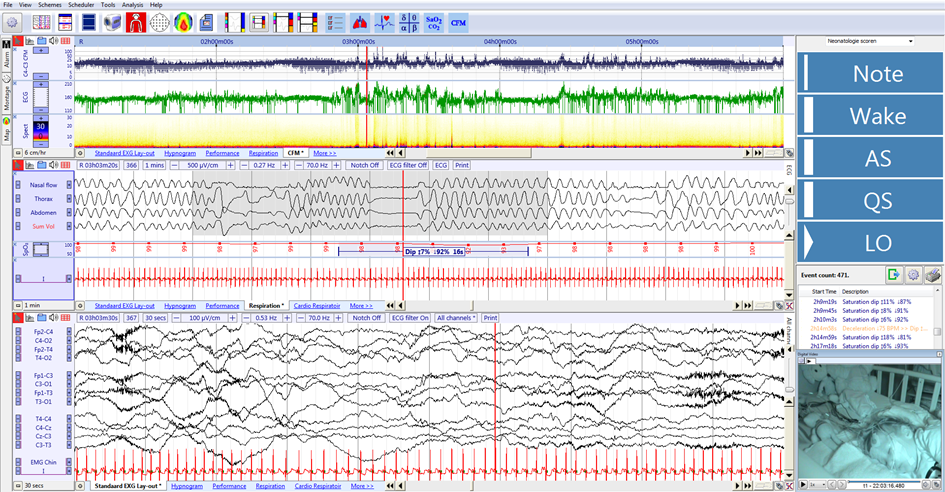Sleep data processing
PSG recordings for infants
In order to facilitate PSG recordings for infants as well as for pediatric patients, the SleepRT™ software integrates a number of adaptations made especially for this group of patients.
Key features:
- Sleep staging for infants
- Cardio-respiratory event detection
- PSG report for infants
- Customized sleep sensors for infants
Sleep staging for infants
For sleep scoring in acquisitions of infants, SleepRT™ includes the sleep stages ‘Active Sleep’ and ‘Quiet Sleep’. For infants without differentiation between Non-REM sleep stages, the sleep stage N can be used.
The information about sleep stages is automatically integrated in the report. For example, the report includes a sleep stage summary with quiet and active sleep stage distribution, a summary of the respiratory events in quiet sleep and active sleep, etcetera.
CFM analysis to determine sleep patterns
The Cerebral Function Monitor (CFM) is often used as a visual interpretation of the EEG signals. The CFM trend is easy to interpret for non-neurologists and contains useful information about the evolution of the sleep pattern of the patient.

Sleep sensors for infants
To minimize chances of infection, a range of disposable sensors was tested for quality and robustness with the SleepRT™ equipment. This includes disposable sensors for EEG, EMG, EOG and ECG, as well as disposable sensors for respiratory effort bands, SaO2, airflow sensors and cannulas. Some examples are shown here:
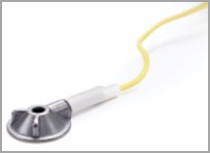
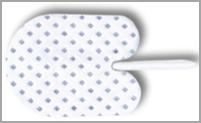
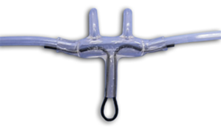
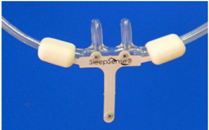
Automatic SleepRT™ analyses for infants
The Automatic SleepRT™ analyses offers parameter sets which are designed especially for infants or children.
This is a very efficient analysis feature because classification rules for respiratory events and other signals in infants are essentially different from the classification rules for adults.
Cardiorespiratory analysis for infantsFor preterm infants, cardio-respiratory parameters are a very important indicator of the patient’s state. The occurrence of many cardio-respiratory events is an indicator that the neonatal patient requires further monitoring, possibly with a home monitoring device.
SleepRT™ automatically detects respiratory disturbances such as apneas and hypopneas. Related events such as oxygen desaturation and high CO2 values are also detected automatically in the SleepRT™ software. Manual corrections by the reviewer are possible.
Automatic reporting of parameters necessary for reimbursement
Thanks to the extensive reporting options in SleepRT™ software, it is possible to create report templates which match your needs perfectly. This includes the possibility to define your own tables of calculated values necessary for reimbursement etc. For example, the values requested by the RIZIV for neonatal sleep research are readily available in the SleepRT™ software.
